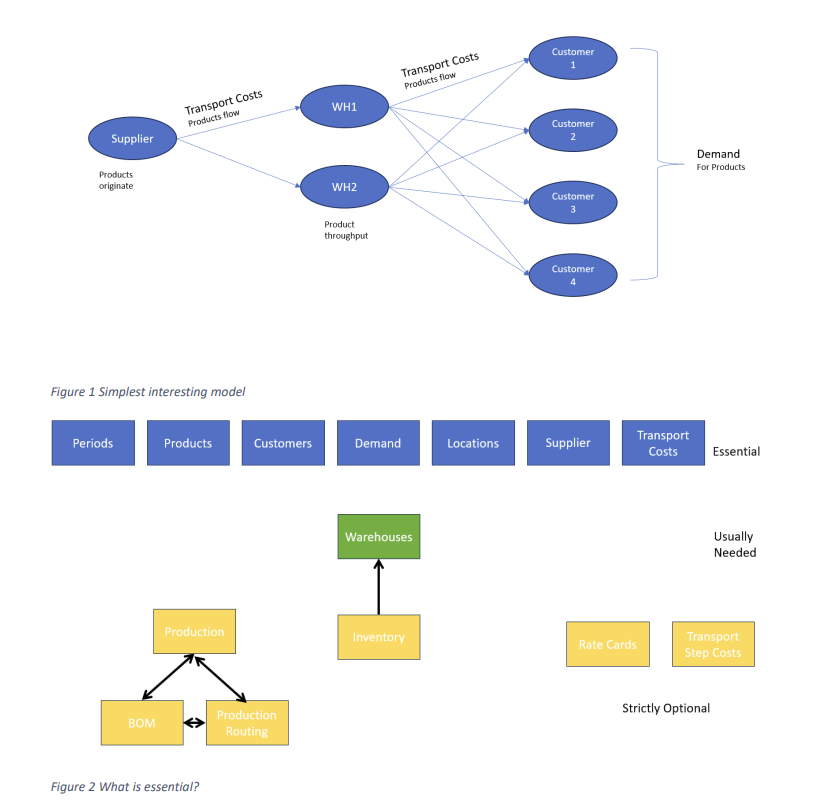What is the Simplest Model
An SC Navigator model will not run if you don’t have, as a minimum:
At least one period
At least one product
Locations
A customer with demand
At least one other location type for your customers to get product from
Transport lanes that allow product(s) to flow to your customers
Locations
Each of your locations must also be defined as a supplier, production, warehouse, or customer. A location may also be defined as any combination of these entities.
Of these:
You must have customers, to demand product. (Note customers can be defined together with the demand in Customer Product Data, so the sheet Customers is not essential)
You must have at least one supplier, as it’s the only way products can enter the model
You don’t need production resources, unless conversion of raw materials to finished goods is in scope:
If inbound flow of raw materials is out of scope (but production is not) you could:
Represent your production sites in the model as though they’re suppliers, OR
Include a generic supplier with a generic raw material that is converted into anything.
If you use production resources, Bill Of Materials and Production Routing are essential, otherwise they should not be used.
Warehouses are not essential for a working model, but there are not many Network Design use cases that don’t have something that acts like a warehouse. Hubs, cross-docks, and storage areas in production sites should be represented as warehouses in your model if you want to represent their handling and/or storage costs.
Inventory is optional, but you must have a warehouse if you want to model inventory.
Summary
In summary, the absolutely simplest model would have one supplier supplying product to customers along transport lanes.
The simplest interesting model would have the supplier supplying product to customers via multiple warehouses or transport lanes, such that there are some choices for the optimization solver to make.
An example of such a model is provided – having such a simple model is useful if you want to test an idea quickly, before turning it in a bigger, more practical, model.
